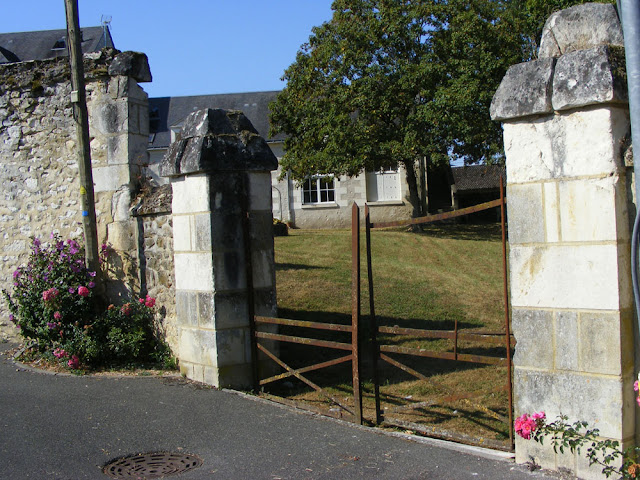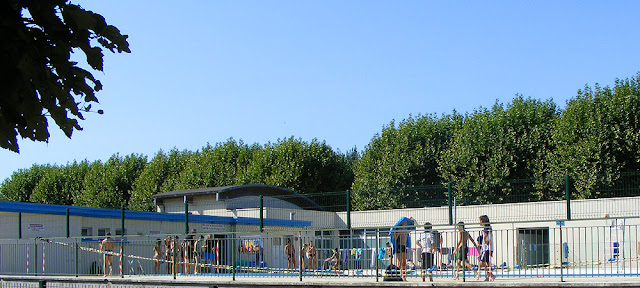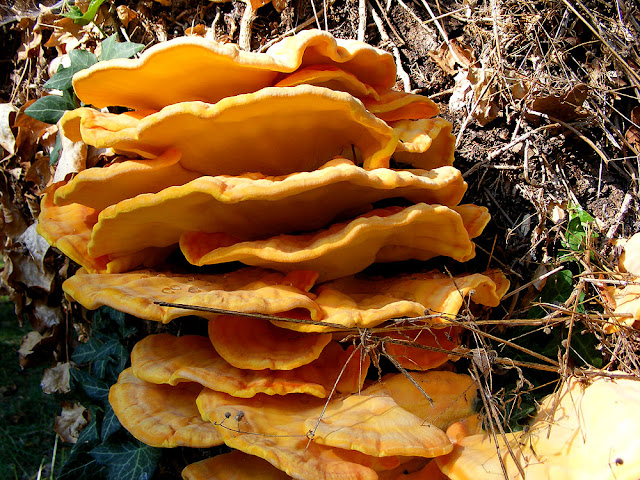 |
Naturalised cyclamens in a small orchard along Allée des Cyclamens.
|
 |
Charolais cattle, grazing on the river flats.
|
 |
Hawthorn Crataegus monogyna (Fr. aubépine).
|
 |
Walking across a slightly dodgy footbridge.
|
 |
River Esves.
|
 |
An old barn.
|
 |
An old gate.
|
 |
School swimming at the Ligueil public pool.
|
 |
Old metal window shutters on an industrial building.
|
 |
An aggregation of mostly juvenile Fire Bugs Pyrrhocoris apterus (Fr. Gendarmes).
|
Fire Bugs are gregarious and promiscuous, and very abundant in France. You will see them absolutely everywhere. They are called Gendarmes in French because in the old days French policemen wore red uniforms.
 |
Chicken of the Woods Laetiporus sulphureus (Fr. Polypore soufré).
|
This magnificent bracket fungus is a much prized edible species, which I'm told sells for about €250 a kilo. This specimen alone would have produced a couple of kilos worth. It was growing in a very typical situation, on the upright trunk of an oak. My fungi expert friend, pharmacist Didier R, says that it is an unmistakable fungus, easily identified by its irregular, rounded and undulating edges and sulphur yellow colour. However, my expert naturalist friend Jean P pointed out that a beginner might confuse it with the Giant Polypore
Meripilus giganteus (Fr. Polypore géante).
************************************************
For details of our private guided tours of chateaux, gardens, wineries, markets and more please visit the
Loire Valley Time Travel website. We would be delighted to design a tour for you.
We are also on
Instagram, so check us out to see a regularly updated selection of our very best photos.












6 comments:
In the fifth photo, is this green straight horizontal line a foot bridge over the Esves?
No bridge in the photo.
CHM, it looks to me like the very green grassed river bank as the river bends to the left.
We have zillions of those fire bugs chez nous.
Thank you Jean. You're right. It was an illusion d'optique!
Everyone does.
Post a Comment